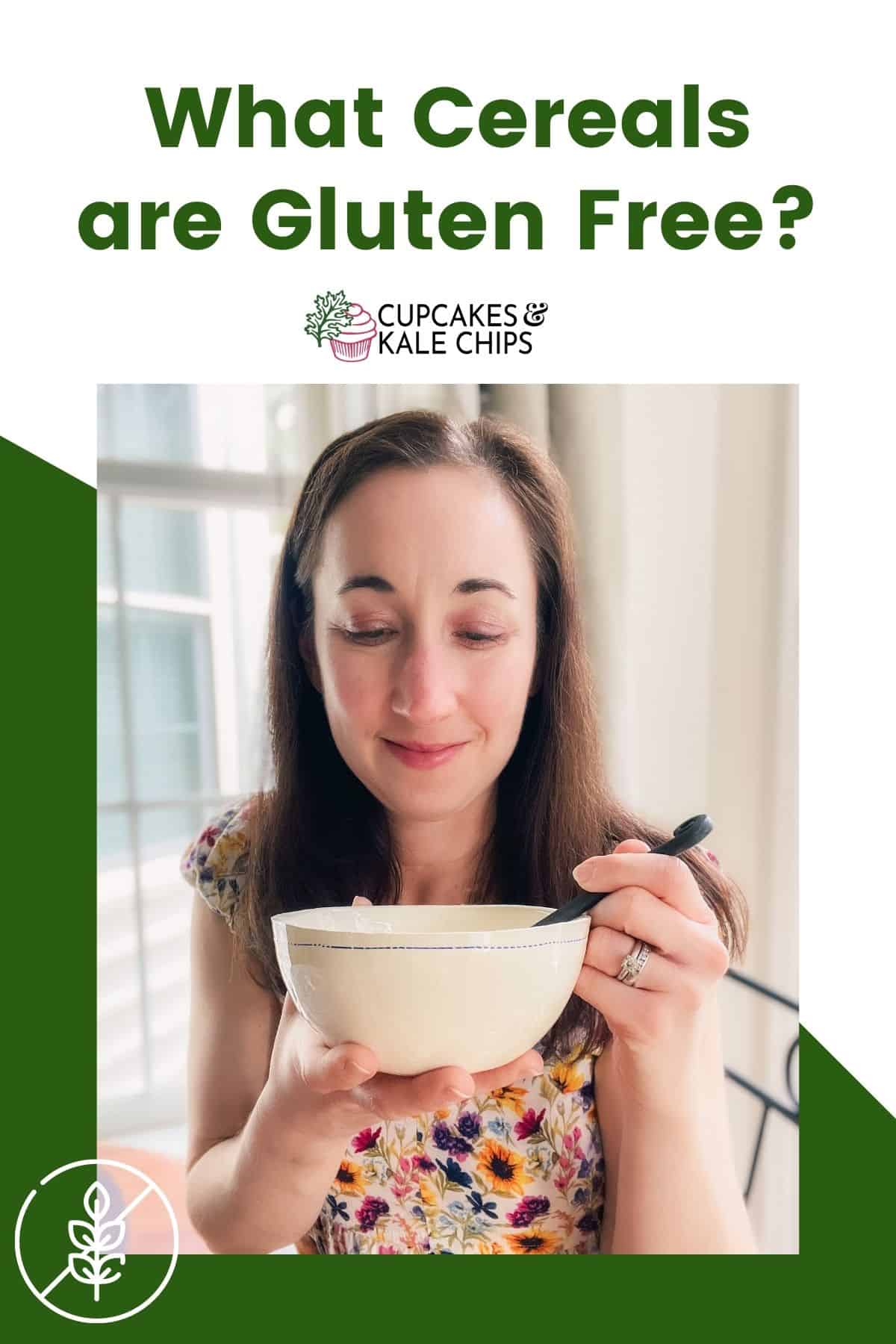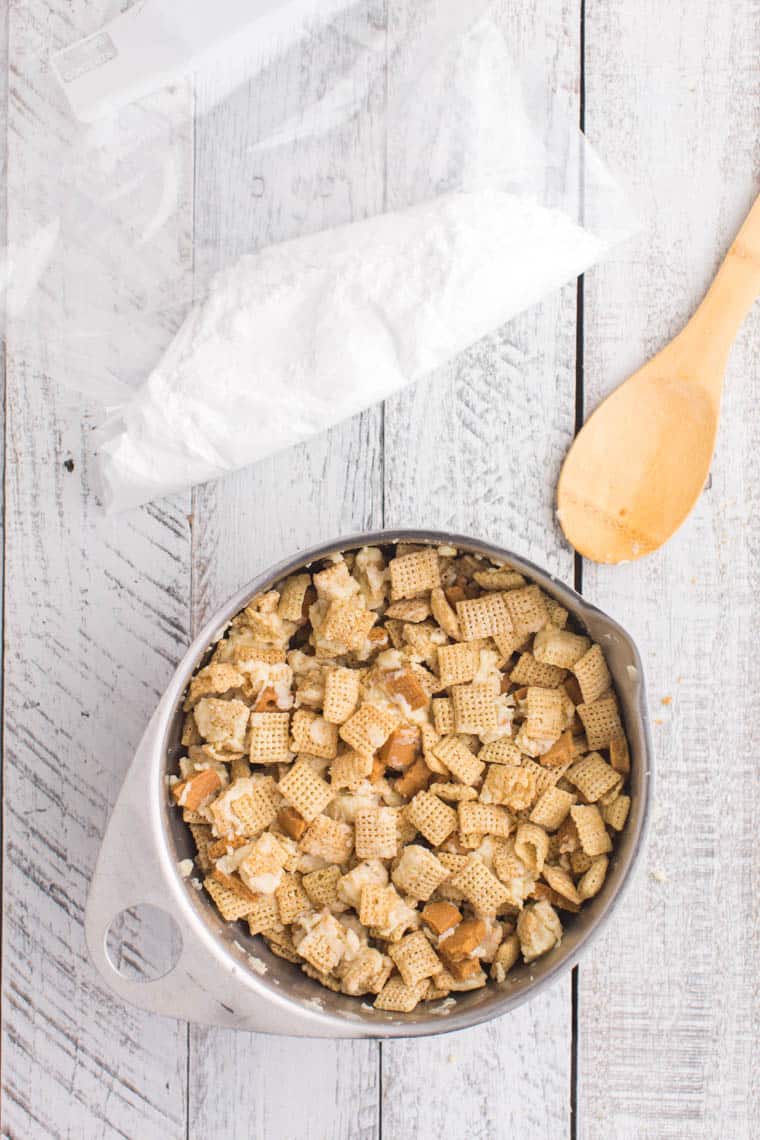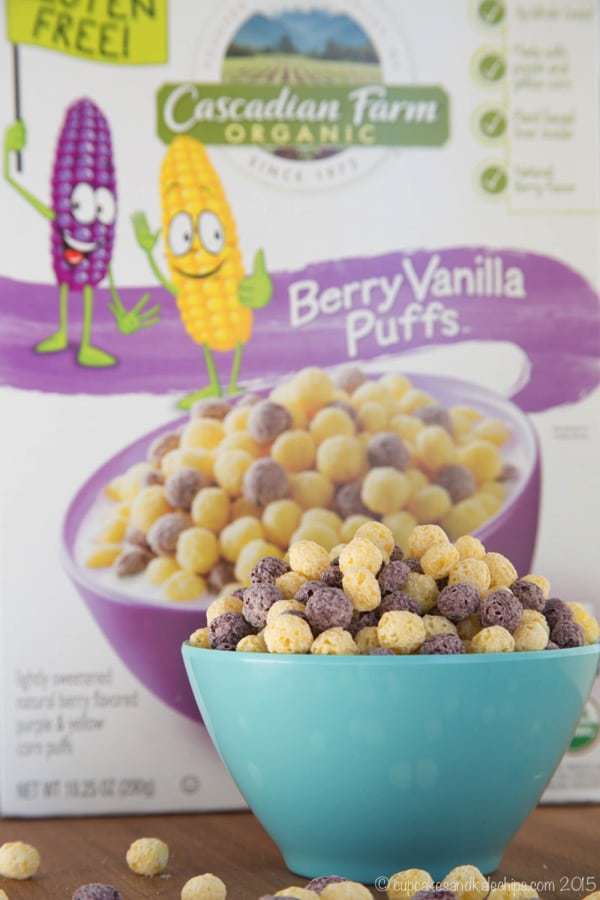


If you’re new to a gluten-free lifestyle, or even if you’ve lived with it for some time, finding cereals that are safe to eat is an ongoing adventure. I’m sharing an easy guide to Gluten-Free Cereal that’s full of helpful info and tips to get you off on the right foot, and keep it there! Plus, my favorite gluten-free cereal brands to keep in mind when perusing the shelves.

Cereals can be a great, nutritious source of grains that make up a healthy diet. So what’s a girl to do when the big ol’ gluten boogeyman comes knocking?
Luckily, after many years of living with a non-celiac gluten-intolerance, I’ve gathered a good bit of intel when it comes to which cereals are safe to eat, and which ones I need to avoid. Fun fact: gluten causes inflammation for everyone, not just those with a gluten sensitivity! But as we know, not all bodies process that inflammation equally.
Those with celiac disease, for example, cannot eat gluten at all. Gluten wreaks havoc on the lining of the small intestine, resulting in nutritional deficiencies, leaky gut, and other disorders.
Going gluten-free can feel a bit like a shot in the dark. Are Corn Flakes gluten-free? What about my kid’s Fruity Pebbles? If you’re wondering what cereal brands are safe to eat, I’m here to help! It’s not always clear or obvious if a cereal contains gluten, so let’s dive in.
Whenever you’re browsing the shelves for a new gluten-free cereal, here are some ways to learn whether or not a cereal may contain gluten:
A Nima Sensor is a handy portable gluten-detector. It’s a small device that can be used to test foods for the presence of gluten, displaying a smiley face if the food in question is, in fact, gluten-free. On the other hand, if the sensor displays a wheat symbol, you’ll know that gluten was found and to steer clear of that particular food!
Nima sensors are especially useful when a brand’s packaging or ingredients are vague, or anytime that packaging does not disclose whether a cereal is certified gluten-free.

It’s time to do some myth busting! While more and more cereal brands now offer options that are free from gluten, it may surprise you how many other cereals actually can contain hidden traces!
Below I’ve gathered a list of popular cereals, where I’ve done some sleuthing into whether or not they’re safe for gluten-free diets.
As always, it’s important to use your discretion – if you’re celiac or have a particularly serious allergy to gluten, or if you’re not sure, it’s a good idea to check with your doctor or a certified professional to make sure which cereals are 100% safe for you to eat!
Cheerios claim to be gluten-free. However, because Cheerios are made with sorted oats and not certified gluten-free oats, many people with celiac disease avoid them. This is due to the chance of the oats mingling with gluten-containing grains like wheat, barley, and rye.
All in all, most varieties of Cheerios are gluten-free, but if you are celiac or have a life-threatening allergy, they may be worth skipping.
All Chex cereal varieties, apart from Multigrain and Wheat Chex, are gluten-free. Their boxes are labeled “gluten free” and include Cinnamon Chex, Honey Nut Chex, Rice Chex, and Vanilla Chex, among others.
Both Fruity Pebbles and Cocoa Pebbles are labeled gluten-free, which is great news for little ones with gluten sensitivities! Fruity Pebbles cereals are made from rice, oil, sugar, and coloring, with no gluten in sight!
The original Lucky Charms cereal (right down to the marshmallows!) is gluten-free. Lucky Charms are made with gluten-free oats, however, like Cheerios, there is the risk of cross-contamination with wheat during the production process. For this reason, anyone with a severe allergy may consider avoiding them.
On the other hand, the Fruity and Chocolate Lucky Charms are not gluten-free and should be avoided in general.
General Mills’ Kix, while not labeled gluten-free, contains no suspicious ingredients (only whole grain corn, corn meal, sugar, salt, brown sugar syrup, and baking soda). As a result, these corn puffs are mostly accepted to be safe for gluten-free diets.
Another puffed corn cereal, this time sweet and peanut butter-y, Reese’s Puffs also show no signs of gluten based on the ingredients list, with whole grain corn as the main ingredient. However, they are not listed as gluten free, which may mean they are processed on shared equipment. Therefore, while they may be safe for some people, those with celiac disease or severe allergies may want to avoid them.




Some major name brands that disclose that they may or do contain gluten:
*There are lots of crisped rice cereals out there that are gluten-free, perfect for breakfast or for making into crispy rice treats! See below for some alternatives.
Luckily, as the science and awareness behind gluten intolerance grows, so does the list of brands offering gluten-free alternatives! Many low-carb brands are now carrying gluten-free options. Here are some gluten-free cereals for kids and adults that you can pick up in stores:
You can also buy gluten-free, generic alternatives in most health food shops or grocery stores:
Many grocery stores have “health food” or “wellness” aisles where you can usually find gluten-free versions of many pantry goods, including cereal. Here are some tips to remember when looking for gluten-free cereals:
Breakfast cereals are actually one of the most processed foods there is. That doesn’t necessarily mean that all of them are bad for you – but there are some things to look out for. Here are other reasons why some cereals should be avoided:
The best way to store cereal after it’s opened is airtight at room temperature. Store cereal in a jar or container in a cool, dry location (like a pantry).
In really humid climates, you can store cereal in the fridge, although I wouldn’t recommend it unless that’s the case.
Of course, we all know that cereal is great for breakfast. But it’s also the perfect ingredient to turn into so many more tasty treats. And these cereal recipes are all gluten free!

Welcome to Cupcakes & Kale Chips, where I share gluten free recipes & kid-tested family favorites!
